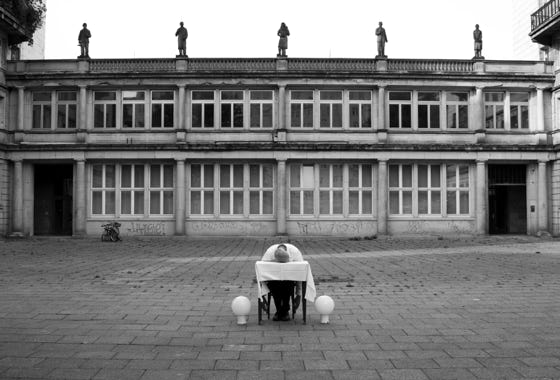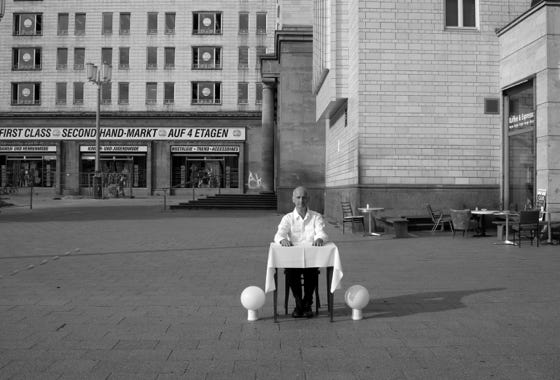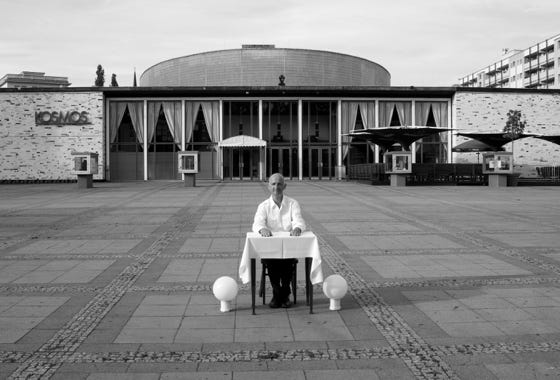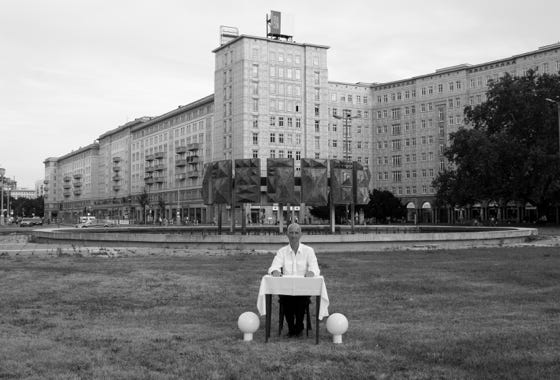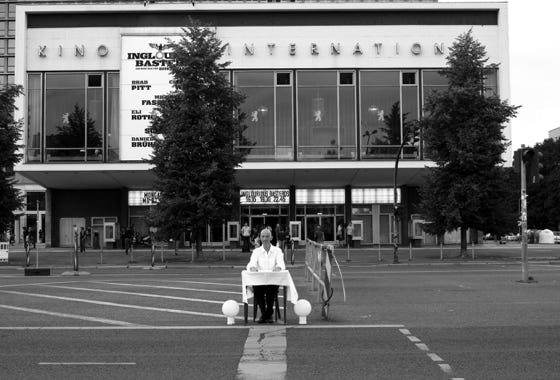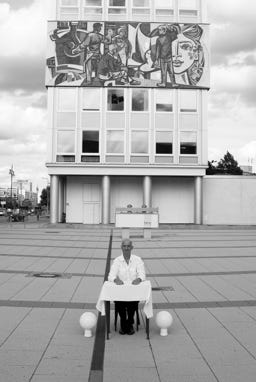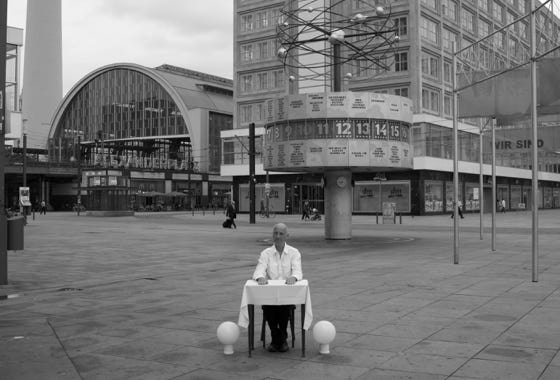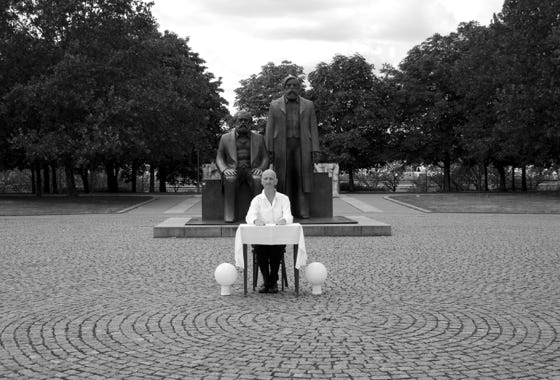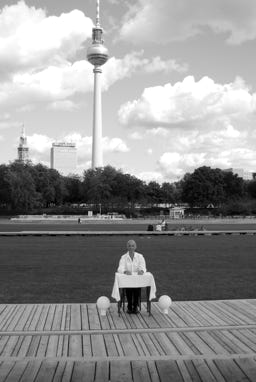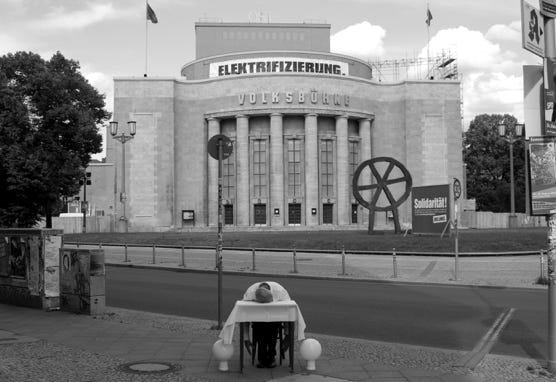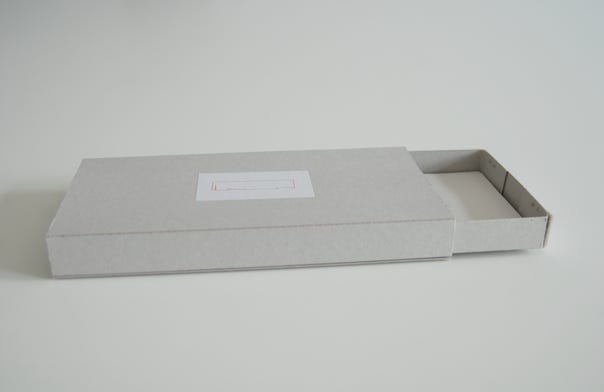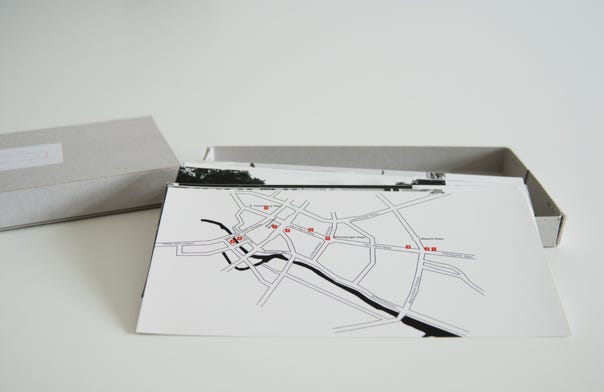STEINE PLÄTZE ZEUGEN / 2009
1. Karl-Marx-Allee - ehe. Stalin Allee
2. Karl-Marx-Allee - Frankfurter Tor
3. Kino Kosmos - Karl-Marx-Allee 131a
4. Strausberger Platz
5. Filmtheater International - Karl-Marx-Allee 33
6. Haus des Lehrers - Alexanderplatz
7. Weltzeituhr - Alexanderplatz
8. Marx und Engels Forum
9. ehem- Palast der Republik
10. Volksbühne
Ausgehend von der Karl-Marx-Allee, ehemals Stalinallee, folge ich der Ost-West-Achse ins ehemalige Zentrum Ostberlins und suche Orte auf, die Ausdruck politischer, wirtschaftlicher und ideologischer Weltanschauung des sozialistischen Systems waren.
Von 1949 bis 1989 war Berlin eine geteilte Stadt. Aus dem sowjetischen Sektor wurde bald die ‚Hauptstadt der DDR’.
Der Alexanderplatz wurde zur Mitte Ostberlins. Die Ost-West-Achse Berlins, die Straße Unter den Linden mit ihrer Verlängerung der Liebknechtstraße traf am Alexanderplatz auf eine nach Südosten abknickende Magistrale: die Stalinallee, später Karl-Marx-Allee. Die neu zu errichtende Prachtstraße sollte den politischen Neuanfang im Osten Deutschlands eindrucksvoll darstellen und Gegner, Zweifler und Kritiker von dessen wirtschaftlicher Stärke überzeugen. Nachdem das Modell der Laubenganghäuser von Hans Scharoun, welches sich an den sozialen Wohnungsbau in Dessau anlehnte, von der SED kritisiert wurde, entstand die ‚Architektur der nationalen Tradition’, die sich am sowjetischen Vorbild orientierte. Die Stalinallee wurde in Ostberlin als Prestigeobjekt in Anlehnung an die breiten Straßen in Moskau mit Säulen und Pilastern, Arkaden und Kolonnaden, Friesen und Gesimsen, Türmen und Wandelgängen dekoriert mit Platten aus Meißner Porzellan entworfen. Der italienische Architekt Aldo Rossi spricht von der Stalinallee als ‚letzte große Straße Europas’.
Starting from Karl-Marx-Allee, formerly Stalinallee, I follow the East-West axis into the former centre of East Berlin and look for places that were expressions of the political, economic and ideological worldview of the socialist system.
From 1949 to 1989, Berlin was a divided city. The Soviet sector soon became the ‘capital of the GDR’.
Alexanderplatz became the centre of East Berlin. The east-west axis of Berlin, Unter den Linden Street with its extension of Liebknechtstraße, met at Alexanderplatz a major road that bends to the southeast: Stalinallee, later Karl-Marx-Allee. The new boulevard was to impressively represent the political new beginning in East Germany and convince opponents, doubters and critics of its economic strength. After the SED criticized Hans Scharoun’s model of arcade houses, which was based on social housing in Dessau, the ‘architecture of the national tradition’ was created, based on the Soviet model. The Stalinallee was designed in East Berlin as a prestigious object, inspired by the broad streets of Moscow, with columns and pilasters, arcades and colonnades, friezes and cornices, towers and walkways, decorated with panels of Meissen porcelain. The Italian architect Aldo Rossi speaks of Stalinallee as ‘Europe’s last great road’.
Box with 11 postcards
© 2024 Silke Panknin . all rights reserved . imprint . privacy policy
